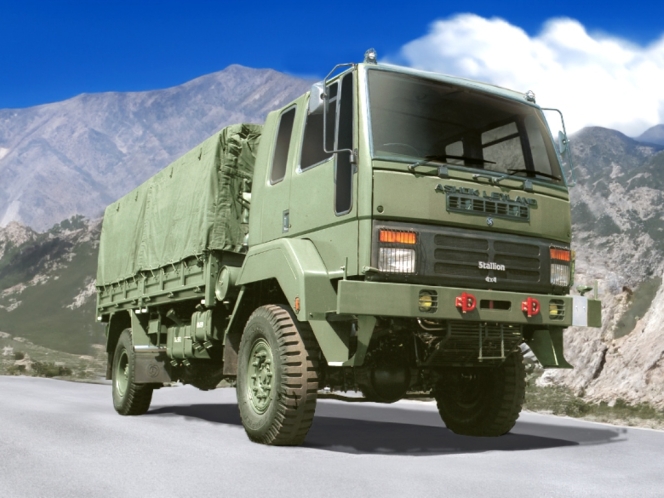SOURCE: AFI

In a significant move to counter the growing threat of unmanned aerial vehicles (UAVs), the Indian Army has initiated the integration of 16 ft x 9 ft anti-drone wire mesh “cope cages” on its fleet of Ashok Leyland Stallion (ALS) vehicles. This strategic upgrade aims to bolster the protection of these critical logistical assets against drone-based attacks, reflecting the Army’s proactive approach to modernizing its defense capabilities in response to evolving warfare dynamics.
The Ashok Leyland Stallion, manufactured under license by the Vehicle Factory Jabalpur (VFJ) of Armoured Vehicles Nigam Limited, is a cornerstone of the Indian Army’s logistical framework. With over 60,000 Stallion trucks in service, these medium-duty defense vehicles are renowned for their reliability and versatility across diverse terrains, from deserts to high-altitude regions up to 5,500 meters. The Stallion, available in 4×4 and 6×6 configurations, has been a trusted workhorse since replacing the Shaktiman trucks in the 1990s, notably proving its mettle during the Kargil War of 1999 with a 95% operational availability rate.
The Stallion’s robust design, powered by Ashok Leyland’s H6 engine with a 6-speed gearbox and full-time 4-wheel drive, supports a gross vehicle weight (GVW) of 12.25 to 14.75 tons and a payload capacity of 5 to 7.5 tons. Its adaptability for various roles, including troop transport, fuel and water bowsers, and field artillery tractors, makes it an ideal candidate for advanced protective modifications like the anti-drone cope cages.
Cope cages, originally developed to counter anti-tank munitions, have evolved into a critical defense against drones, particularly those carrying explosives or conducting reconnaissance. The 16 ft x 9 ft wire mesh cages being mounted on the Stallion are designed to disrupt the flight path of drones and neutralize their payloads before impact. Constructed from lightweight yet durable materials, these cages provide a cost-effective solution to protect vehicles without compromising mobility or operational efficiency.
The wire mesh design is optimized to entangle or deflect small drones, which are increasingly used in modern warfare for surveillance and targeted strikes. By integrating these cages, the Indian Army aims to safeguard its Stallion fleet from aerial threats, particularly in contested border regions where drone incursions have become a growing concern.
The decision to equip Stallion vehicles with anti-drone cope cages comes amid rising global concerns over the proliferation of drone technology in asymmetric warfare. Recent conflicts have demonstrated the effectiveness of low-cost drones in targeting armored and logistical vehicles, prompting militaries worldwide to adopt countermeasures. The Indian Army’s adoption of this technology underscores its commitment to staying ahead of emerging threats, aligning with the broader “Atmanirbhar Bharat” initiative to develop indigenous defense solutions.
NOTE: AFI is a proud outsourced content creator partner of IDRW.ORG. All content created by AFI is the sole property of AFI and is protected by copyright. AFI takes copyright infringement seriously and will pursue all legal options available to protect its content.